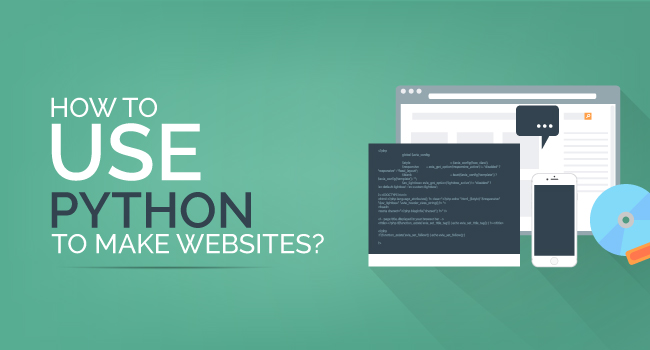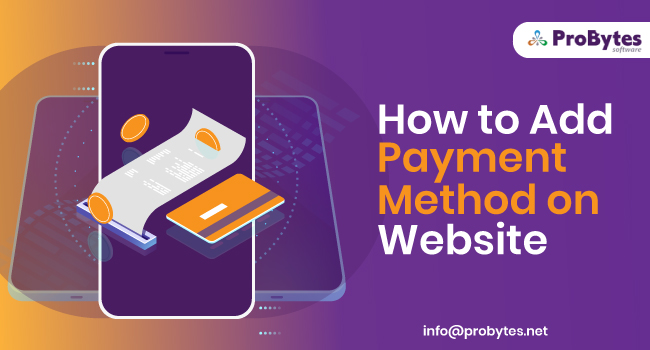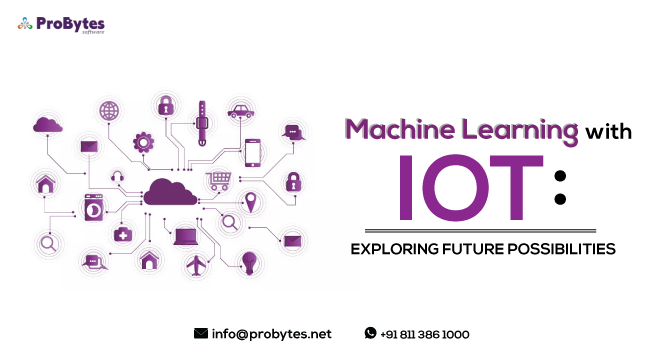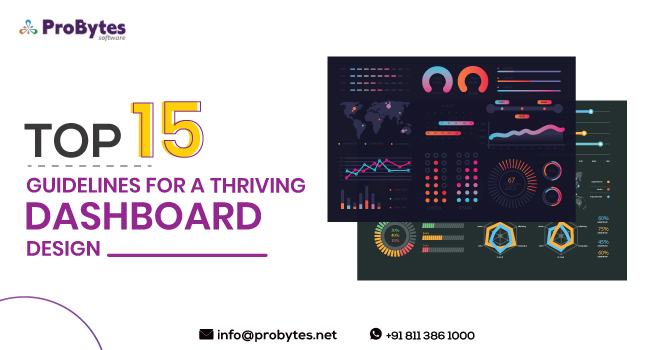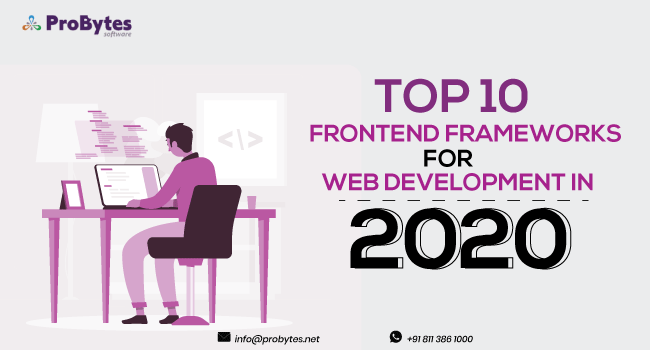Blog Category(283 Blogs)
Are you a Python Developer? Or looking for a job in Python Development? Or is there an interview you want to crack no matter what? Well, you don’t have to waste your time anymore! This post contains 100 Python interview questions and answers which will surely help you.
These sample questions for the interview are framed by our various experienced Python developers and experts. This will give you an idea of what can be asked in the interview related to Python development.
Python Development Interview Questions
1. What is Python?
Python is a general-purpose programming language which is object-oriented and high-level programming mainly used for web applications and development.
2. What are the features Python can offer?
Python can be used to create software, games and web application using several frameworks.
3. Can you compare Java and Python?
Yes, the biggest difference between Java and Python, Python is easier and simpler whereas Java uses more complex codes.
4. Is Python an interpreted language?
Yes, Python has interpreted language because Python programs run directly from the source code.
5. Who was the founder of Python and when was it released?
Guido Van Rossum has founded the Python and it was released in December 1989.
6. Name any programming paradigms which Python include?
Object-oriented, imperative, functional and procedural are the programming paradigms which Python include.
7. Why is Python said to be a High-Level Programming Language?
Python is said to be High-Level Programming language because the language which Python uses is closer to human languages thus which makes it easier for a human to interpret.
8. What do you know about PEP 8? Why is it important?
PEP 8 is Python’s style guide which has set of rules for how to format your Python code. It is important because it shows how the Python code should be formatted.
9. Can you differentiate between pickling and Un-pickling in Python?
Pickling in Python is the process of converting Python object to byte stream whereas unpicking is the reverse operation of the pickling.
10. How will you find the bugs and errors in a Python code?
To find the bugs and errors in Python code we’ll use Python Debugger tool or PDB.
11. Can you state the names of the tool which are used to find bugs in Python?
PyChecker is used to find bugs in Python. Pylint is another tool which can be used to detect errors.
12. How can you alter functions in Python syntax?
By using Python decorators we can alter the functions easily.
13. What is the use of dictionaries in Python?
Dictionaries in Python are used for mapping of unique keys to values.
14. What are the major two versions of Python Programming language?
Python 2.0 and Python 3.0 are the two versions used Python programming language.
15. What is “The Zen of Python”?
It is the principle which influences the design of the python programming.
16. What is the use of functions help ( ) and dir ( )? How are they different?
Help () and dir () both are used to view the attributes of built-in functions in Python.
Help (): this function is used to display built-in functions as well as to provide help related to the module.
Dir (): dir () can show the methods and attributes of the class.
17. Which command do you use to exit the help window in Python programming?
To exit the help window in Python programming ‘press q’.
18. How would you list all the built-in functions and variables in Python?
By using help () function or dir () function we can list all the built-in functions that are available in the Python.
19. Explain module in Python?
The Module is used to structure a Python program. Modules basically contain a set of functions which you want to use in a Python program.
20. How will you find methods or attributes of an object?
We can find methods or attributes of an object by using built-in functions. Help () or dir () can be used to find the attributes of an object.
21. What do you know about mutable and immutable types in Python?
They are the built-in types of Python.
Mutable built-in types are list, sets, and dictionaries.
Immutable built-in types are strings, tuples, and numbers.
22. Why isn’t memory freed whenever the Python exits?
Memory isn’t freed because Python does not try to destroy every single of its object. Also, certain bits of memory are distributed by the C library which is impossible to get free.
23. Can you explain the term monkey patching in Python?
Monkey Patching is a method by which we can extend our programming while runtime. We can modify the code or extends it while runtime.
24. What does “*args” and “**kwargs” means and why do have to use it?
*args and **kwargs are the special syntax used for the function to pass a variable number of arguments to a function in a Python.
25. Write a single line code to count the capitals letters in a file in Python.
Single line code: count sum(1 for line in cl for character in line if character.isupper())
26. Write a code to randomize the items of a list in their accurate place in Python.
Output:
[‘y‘, ‘v ‘, ‘z ‘, ‘x ‘, ‘w ‘ ]
27. Can you explain the term compilation and linking in Python?
Compilation: allows the new extensions to properly compile without any error.
Linking: After the new extensions are properly compiled without any error, the linking is done.
28. Write a code in Python to sort the numbers in a list.
Output: 1 3 5 6 10
29. How will you modify the strings in Python? Can you name all of them?
We can use different functions which can be used to modify the strings. Split(), sub(), and subn() are the functions used to modify the strings in Python.
30. How will you generate random numbers in Python?
import random
print(random.randint(0,5))
31. Can u state the difference between range and xrange in Python? State their uses.
Both are used to generate a list of number for the user to use. Thus only difference is that xrange only returns the xrange object whereas range returns the Python list of object.
32. Explain the term unittest. What is the use of unittest in Python?
Unittest in Python provides a unit testing framework. It helps in automation testing, shutdown code for tests, aggregation of tests and independence tests.
33. Can you convert a string to a number and how?
Yes, we can convert a string to a number by using built-in functions in Python. For example, ch = “4789” is a string which can be converted to an integer by using
num = int(ch)
34. Can you copy an object in Python and how?
You cannot copy most of the objects but still by using copy.copy() or copy.deepcopy() we can copy an object in Python.
35. What do you understand by the term local and global variables in Python?
Local variables are set to be local when they are declared in the function’s body. Global variables are those variables which are declared outside the function’s body which has to be used.
36. Can you share global variables across the modules?
Yes, we can share a global variable across the modules by creating a special configuration module often called config or cfg.
37. When was the Python 2.0 and Python 3.0 released?
Python 2.0 was released on 16 October 2000 and Python 3.0 was released on 3 December 2008.
38. Name the types of divisions which are used in Python?
True division and floor division are the types of division used in Python.
39. Name few platforms which Python supports?
Python supports various platforms like Windows, Linux, MacOS or any other .NET framework.
40. Define the term pass in Python?
The pass is a placeholder in a statement where nothing has to be written. It should be left blank.
41. What are the conditional statements in Python?
Conditional statements in Python are basically a syntax used to check whether the given condition is true or not.
42. Define the term slicing in Python.
Slicing is a process to select a range of items from a sequence. The Sequence can be list, tuple, strings etc.
43. What is the Lambda expression in Python?
It is used to create a one-time or small function objects in Python.
44. What are the applications of Python?
Python can be used in developing games, web applications, and software.
45. Define the libraries in Python. How is library used in Python?
Libraries are basically collections of functions in Python. It helps the user to perform actions without writing code.
46. State the advantages and disadvantages of Python?
Python is easy to learn and supports various platforms and system. It is object-Oriented Language
Python is slow as well as not a very good language for mobile development. It is impossible to create a high graphics 3D game using Python.
47. How will you represent a statement in Python?
Newline (enter) is used to represent a statement in Python. Use of semicolon at the end of the statement is optional.
48. Can you explain the use of “with” statement?
Using ‘with’ statement in Python, we get the better syntax and exceptions handling. It simplifies exception handling by cleanup tasks.
49. State the difference between modules and packages in Python.
A module is a single Python file whereas package is a collection of modules.
50. If you are a beginner, which programming language would you prefer between Java and Python to develop games and why?
I would prefer Python over Java to develop games. As a beginner Python can be easier as it already supports various platforms in which we can easily create games.
51. Can you suggest me some good frameworks which are used in Python? Can you give an example where they are used?
PyGame, Django, flask are some good frameworks which are used in Python. Pygame is used to create games and Django is used in web application.
52. Name few applications which are developed using the Python language?
Battlefield 2, Quora, BitTorrent, Dropbox, Instagram and many more which are developed using Python Language.
53. Why enumerate ( ) is used in Python?
It is used in Python to simplify the programmer’s task by providing a built-in function which adds a counter to an iterable object.
54. Suggest me the built-in function which can be used to display the contents in reverse order?
Reverse () function is used to display the contents in reverse order.
55. Explain the term List Comprehension.
List comprehension is a method of creating a list while performing some operation on the data through which it can use an iterator.
56. Can you explain the term OOP? Is Python object-oriented language?
OOP stands for Object-Oriented Programming is a programming model in which the programmer defines the data structure and also the types of operations which can be applied to the data structure.
57. Explain the term inheritance in Python.
Inheritance in Python is defining a new class with no modification to an existing class. Hence it is a powerful feature which can be used in OOP.
58. What is super in Python?
The super function in Python is used to gain access from parent to sibling to inherited method.
59. Name some companies which are using Python?
Google, Mozilla, IBM, Yahoo, NASA and many others which are using Python programming language.
60. What are the variables in Python?
In Python to store values, the memory location is reserved, that reserved memory location is known as variable.
61. Can u differentiate between .py and .pyc files? What is the use of these files?
.py file is used in compilation whereas .pyc is the saved file in Python.
62. Can you retrieve a data from a database? How?
Yes, we can retrieve a data from a database in Python. By using MySQL or SQLite we can retrieve any data from the database.
63. If you want to retrieve a data from a table in MySQL database, which query will you use?
First, we’ll use execute () query than to fetch the data we’ll use fetchone() query.
64. State the difference between copy.copy(x) and copy.deepcopy(x).
Copy.copy(x) returns a shallow copy of x whereas copy.deepcopy(x) returns a deep copy of x.
65. Explain between the terms append ( ) and extend ( ) methods.
Append () is used to add an element in Python whereas extend () is used to merge multiple elements.
66. Can you use Python for web development? Name some web frameworks which can be useful?
Yes, Python can be used for web development. Django, flask or pyramid can be used for web development.
67. State the difference between Django and Flask?
Flask is web-framework generally used to build a small application with a simpler requirement whereas Django is used to build larger applications.
68. What is Django?
Django is a Python web framework which is used for the web development. It is a high-level and open-source framework which follows the MVT (Model View Template) pattern.
69. Can you explain me the term map function in Python?
Map functions are generally used to apply functions the sequences and other iterables. It is the simple built-in used in Python.
70. What is numPy and sciPy in Python?
SciPy is Python-based system of open-source software for science, engineering or mathematics whereas NumPy is a package used to compute scientific calculations in Python.
71. What is the use of Pygame in Python?
Pygame is an open-source library in Python which is used to make games and multimedia application.
72. Assume list is [1, 22, 33, 44, 55], what is list [-1]?
The answer is
55
73. Which code should be used to open a file Python.txt?
File = open (“Python.txt”,”w+”)
74. Explain Package in Python?
A package in Python is a special directory which contains a special file and multiple modules.
75. Does Python have scope in a programming language?
As it is the most versatile programming language, Python does have a great scope for building web applications.
76. Can you check the file existence in Python?
To check the file existence in Python the most common way is to use exist() or isfile() syntax.
77. Define the term multithreading in Python?
Multithreading in Python is a technique by which several processors can use a single set of code at different stages of execution.
78. What is the syntax of using “else” statement in Python?
if expression:
statement(x)
else:
statement(x)
79. Define the term iteration? Why is iteration used in Python?
Iteration can be defined as the control flow statement which allows the code to be executed repeatedly. Iteration is used for a loop which can be used to execute array.
80. How can you define a class in Python?
A class can be defined as an object constructor. It consists of several attributes which are used for creating objects.
81. Explain Dash framework?
It is an open-source Python framework used for creating analytical web applications. It’s good for beginners who aren’t familiar with the web development.
82. What is the use of a web framework in Python?
The web applications like web services, web resources, and web APIs are supported and developed using web framework
83. Are there any predefined functions available in Python?
Yes, there are numerous predefined functions which are available in Python. bool(), compile(), dict(), float() etc.
84. How would you take the input from the user, state the syntax?
To take the input from the user we’ll use function input() or raw_input().
Syntax: printf “enter the number”
x= raw_input()
85. Is Python good for web development or game development?
Python is good for both the development. As it is easy and simple, this supports multiple frameworks which can be used to create applications.
86. State the difference between list and tuple.
The only difference is that list is mutable type while tuple is an immutable type.
87. Can u list some games which were developed using Python?
Yes, there are many 3D games which use the Python language. Battlefield, EVE online, Pydance or openRTS are some of the games which were developed using Python.
88. Describe index in Python?
Python can be the index in positive and negative numbers. Starting from the positive index, 0 is the first index, 1 is the second index and so on. Whereas negative index starts from -1 and goes on.
89. Do you know any other programming languages which are influenced by Python?
Yes, there are several languages which are influenced by Python. C, C++, ABC, Dylan and many others.
90. How many ways are there to copy an object in Python?
We can use copy.copy() or copy.deepcopy() to make the copies of an object in Python.
91. Can u define a term generator in Python?
Yes, the process for implementing the iterators in Python is known as generators.
92. Explain the term docstring in Python.
Docstring is the way of documenting the Python functions, packages and classes. Docstring is basically a Python documentation string.
93. Write a code to delete a file in Python.
The syntax which is can be used to delete a file in Python:
Import os
Os.remove(“ File_name.txt”)
94. Why ‘ // ’ operator is used in Python?
It is a floor division type, which is used for division of two numbers. The result of the quotient shows only digits before the decimal point.
95. Can we use Python as a scripting language?
Yes, we can use Python as a scripting language. It can be used for web programming like PHP, ruby which is a scripted language.
96. Which framework does Python use to make a web application?
Django, Flask or pyramid are the most popular web framework used to make a web application.
97. What do you know about PDB?
PDB is generally known as Python Debugger. It is a debugger tool which is used to find bugs and errors while runtime of a program.
98. Define the terms split() in Python?
This function is used to split the string into the smaller string using the defined separator.
99. Is Python easy to learn and easy to write?
Yes, Python is very easy to learn and is not complex as compared to other programming languages.
100. What is the use of Flask in Python?
Flask is used to make a simple and small web application. It is independent of external libraries.
Top 100 Python Interview Questions And Answers
Python Programming based jobs are now in high demand. But to crack the initial Q and A interview you need to know certain aspects of Python. Go through this Sl…
Exclusive Bonus: Download PDF

 Python
Python Magento
Magento Odoo
Odoo How To
How To How Much
How Much Yii Development
Yii Development Core PHP
Core PHP Prestashop
Prestashop Latest News
Latest News Education
Education Web Design
Web Design Business
Business Ecommerce
Ecommerce Travel
Travel Banking and Finance
Banking and Finance Web Development
Web Development Ruby On Rails
Ruby On Rails Joomla Development
Joomla Development Ecommerce
Ecommerce Magento Development Services
Magento Development Services Hire a Developer
Hire a Developer Web Crawling Services
Web Crawling Services




